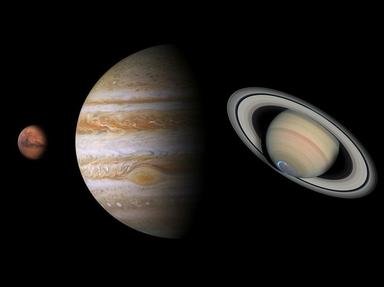Quiz Answer Key and Fun Facts
1. The Sun: When was it 'born' and how long is it still expected to shine?
2. Mercury: What caused the forming of the huge escarpments all over its surface?
3. Venus: What's the predominant gas in its atmosphere?
4. Earth: Who or what was the first to determine the circumference of our planet?
5. Mars: What is one of the few similarities between its northern and its southern hemisphere?
6. Jupiter: Why should NOT this planet be referred as a "failed star"?
7. Saturn: What's the name of the mission launched in 1997 to study Saturn and its satellites?
8. Uranus: How many of this planet's 21 moons are bigger in diameter than our moon?
9. Neptune: What visual instrument would be sufficient for you to use in order to see this planet?
10. Pluto: How were the astronomers able to construct an approximate map of its surface?
Source: Author
Mr5
This quiz was reviewed by FunTrivia editor
crisw before going online.
Any errors found in FunTrivia content are routinely corrected through our feedback system.


